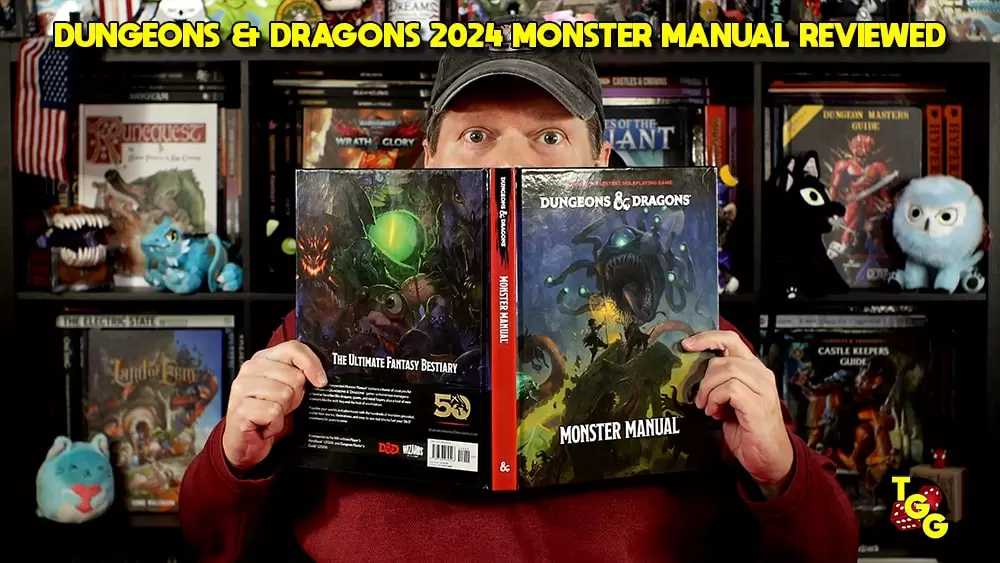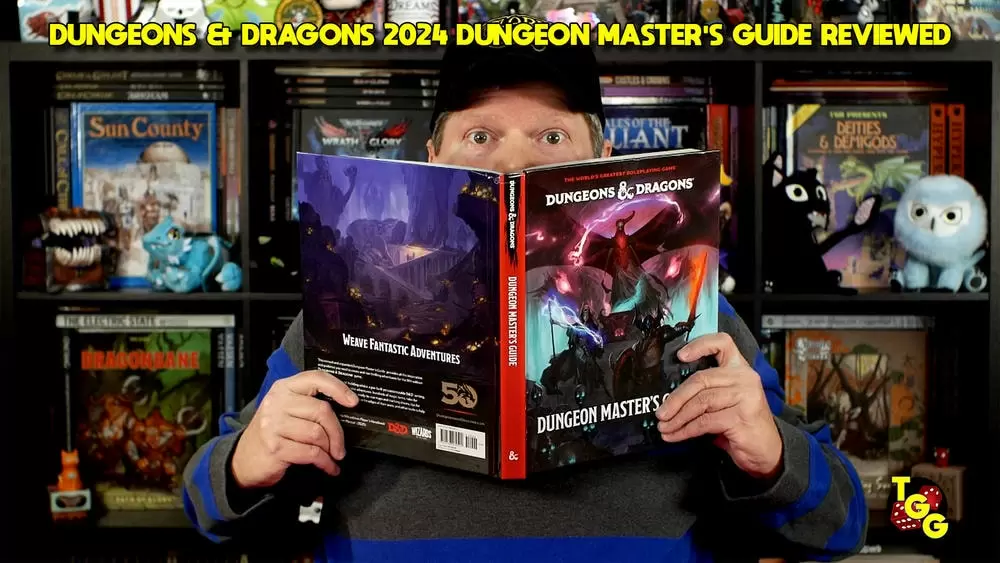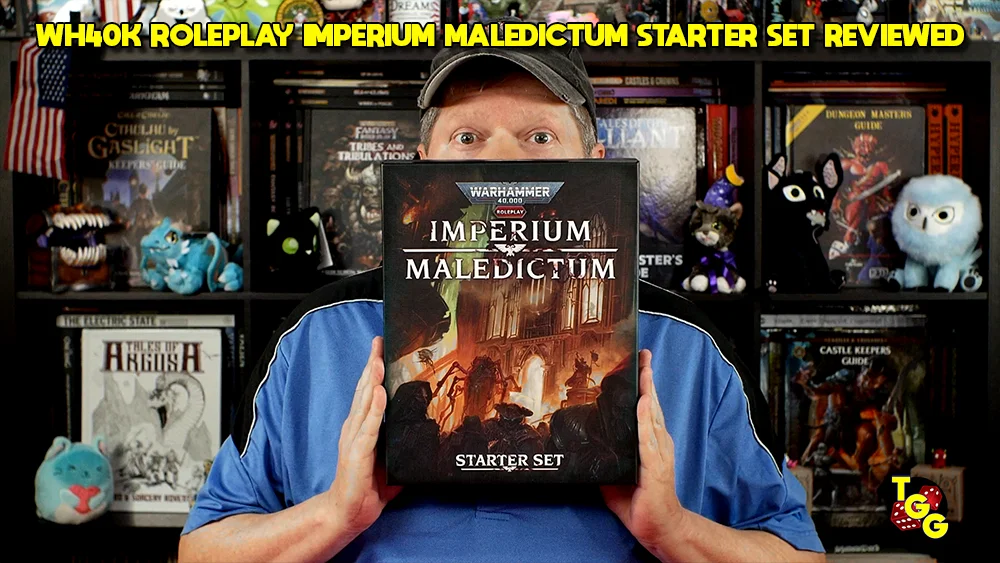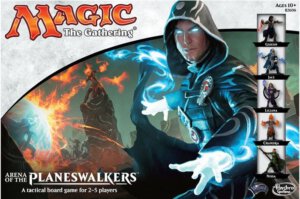
Publisher: Hasbro/Wizards of the Coast
Designers: James D’Aloisio, Ethan Fleischer, and Craig Van Ness
Year: 2015
Genre: Miniatures battle game of Magic: The Gathering spells, spell casters, and creatures
Players: Two to five players
Ages: 10+
Playing Time: 60 minutes
MSRP: $29.99
Magic: The Gathering – Arena of the Planeswalkers Outside the Box
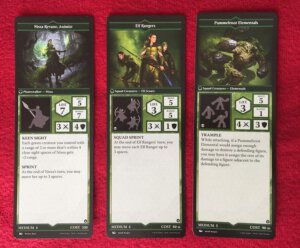
An important item of note is the rulebook. While Arena of the Planeswalkers is a pretty damn easy game to learn and get into, you wouldn’t know it by the rules presentation. It’s almost as if a decision was made to hire the worst game developer on the planet to concoct the least intuitive rules possible. Thankfully much clearer info has become available online but trying to put everything together with only the rules in the box is a bit of a slog.
Up to five players represent spell wielding Planeswalkers of Magic: The Gathering lore and each will look to achieve victory (either head to head or part of a team) by casting spells, summoning creatures to attack the enemy, and using your spellcaster in battle. Setup normally takes no more than ten minutes as players choose their Planeswalker, applicable spell and army cards for that Planeswalker’s color of mana, and miniatures for that faction. The map sections are assembled and terrain and obstacles placed depending on the scenario being played.
A player begins with the army card of their Planeswalker along with army cards and spells, of the corresponding color of mana, equaling the point total for the scenario to be played. The scenarios included all call for 500 point armies and each spell and creature has an associated cost so it isn’t as if each player can use everything in their faction. Players each draw three spell cards and place the remaining spells face down to make their library. Everything else is set to the side to be used later in the game.
Turns play out in the following action order:

2) Choose an Army Card – The active player selects one of the Army cards from any unit of the battlefield. This can be a Planeswalker or summoned creatures or heroes. Planeswalkers may also summon up to two squads or heroes during this action. These figures are placed in an empty hex within five hexes of the summoner and must be in the line of sight.
3) Move One or More Figures – In effect you may move any figure (or figures) which make up the selected army card. There are some additional rules for moving to higher elevations, obstacles, tight quarters and so forth but they aren’t overly tricky. For the most part you’ll use the move rate of the figures to determine how far they can advance across the battlefield.
4) Attack – You may now attack with any of the figures from the selected Army card as long as a target is in range. Every figure has a power and toughness rating to use. The attacker rolls the number of dice indicated by power and the defender may roll the number as shown under toughness. Crossed sword results are hits while shield results are blocks. Excess hits carry over to the life of the target with each decreasing the remaining total by one. Once the life is reduced to zero the figure is destroyed. The attack and defense dice are modified by a variety of factors including spells, abilities, elevation, and more so it’s important to take all of these into account during the attack.
5) Advance to the Next Player’s Turn – Easy peasy, you just have the next player compete the above actions to complete the turn. The use of the term “turn” is a bit odd since most gamers expect all the players to go through a repeating process during a “turn.” In this case a turn is made up of only a single player’s actions.
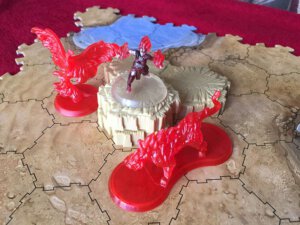
The turn actions are easy enough and, as I’ve mentioned, once someone has the gist of the rules down pat the game motors along nicely. The problem one encounters are how many of the important rules are buried throughout the booklet and normally not in a logical place to look either. Such as when do you cast spells? The details are found in the instructions for action one, drawing the spell card, which indicates spells are cast before action three (moving) and after action four (attack). Yet mention of casting spells is nowhere in the text for those two later actions. Wouldn’t it have made more sense to simply add the two spell casting opportunities as separate actions?
Just one example of the non-intuitiveness of the rules…
Those who are overly familiar with M:tG might have to take a moment to wrap their heads around the spell casting as well. As long as the player has an active Planeswalker, and spell cards in their hand, up to three spells may be cast during their own turn. Spells are never cast on an opponent’s turn. There’s no cost involved in casting; if you have the card you may play the card. There’s no tapping of mana sources or working to chain combos involved. Creatures and heroes are summoned if they are in the player’s reserve, with up to two army cards hitting the battlefield each turn.
Strangely enough you’d think the rules presentation would be a clue Arena of the Planeswalkers is going to be a lousy game but, in truth, it turns out the game is a lot of fun! The game plays like M:tG on a table top with the different mana colors, and their traditional effects, coming to life. Everything moves along quickly, it doesn’t take long to set up, and you can actually use a bit of strategy in how you approach vanquishing the enemy. You just have to trudge through everything to figure out how to play and any online FAQs you can run across become must reads.
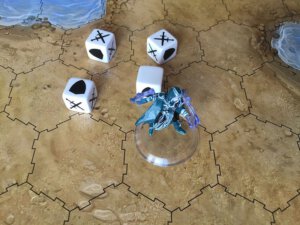
To this point I think Magic: The Gathering – Arena of the Planeswalkers has flown a touch under the radar and it’s probably due to only the core game being available in stores. That’s about to change though as there’s a new expansion arriving this month which adds two new Planeswalkers, as well as their spells and armies, to the mix. Hopefully, this time out the rules will have been refined to the point where they can at least make sense on the first go round.
Arena of the Planeswalkers will certainly lead to plenty of entertainment around the gaming table, even with the issues I’ve mentioned about. Although the minis aren’t spectacular, the game really is a steal at the price point.
[rwp-review id=”0″]
- Space 1999: The Roleplaying Game Receives a Free Quickstart - Apr 4, 2025
- PWYW for the Temple of the Beggar-King Adventure for OSE Advanced Fantasy - Apr 4, 2025
- Score Savings with the Feng Shui Ammo Pack - Apr 4, 2025





